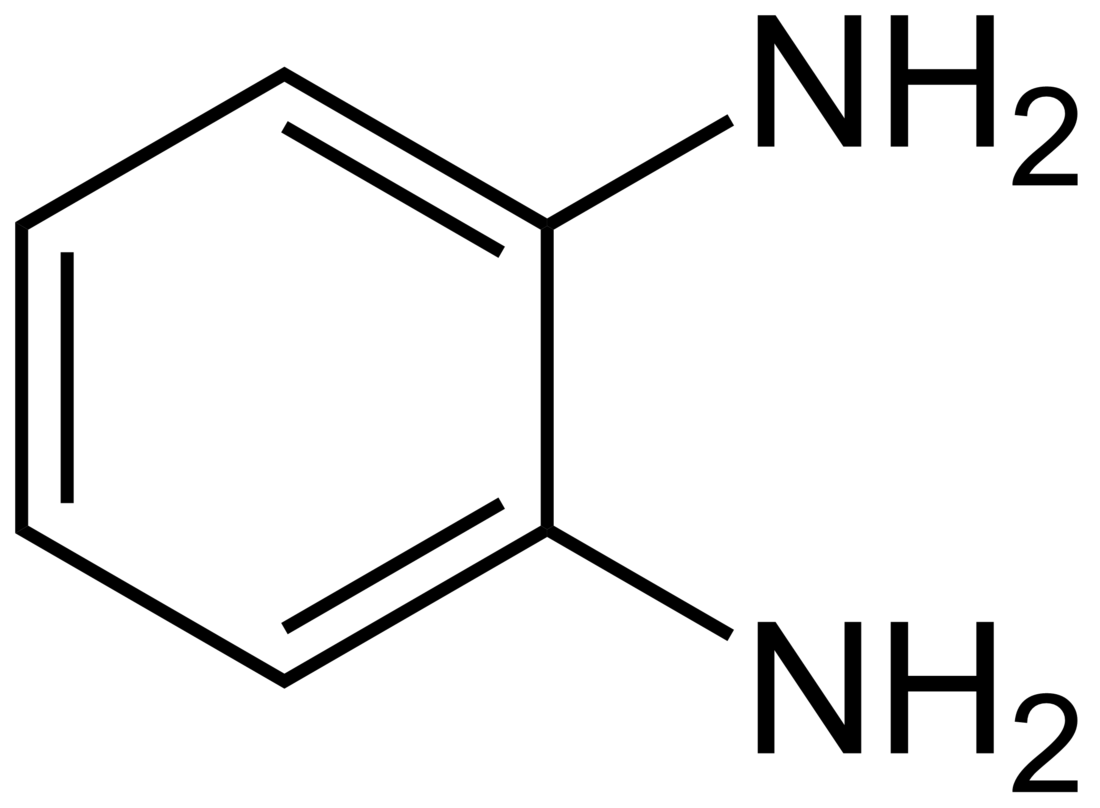Top Qs
Timeline
Chat
Perspective
O-Phenylenediamine
Chemical compound From Wikipedia, the free encyclopedia
Remove ads
o-Phenylenediamine (OPD) is an organic compound with the formula C6H4(NH2)2. This aromatic diamine is an important precursor to many heterocyclic compounds. OPD is a white compound although samples appear darker owing to oxidation by air. It is isomeric with m-phenylenediamine and p-phenylenediamine.
Remove ads
Preparation
Commonly, 2-nitrochlorobenzene is treated with ammonia to generate 2-nitroaniline, whose nitro group is then reduced:[4]
- ClC6H4NO2 + 2 NH3 → H2NC6H4NO2 + NH4Cl
- H2NC6H4NO2 + 3 H2 → H2NC6H4NH2 + 2 H2O
In the laboratory, the reduction of the nitroaniline is effected with zinc powder in ethanol, followed by purification of the diamine as the hydrochloride salt. Darkened impure samples can be purified by treatment of its aqueous solution with sodium dithionite and activated carbon.[5]
Remove ads
Reactions and uses
o-Phenylenediamine condenses with ketones and aldehydes to give rise to various valuable products. Its reactions with formic acids to produce benzimidazole.[6] Other carboxylic acids give 2-substituted benzimidazoles. The herbicides benomyl and fuberidazole are made in this manner. Thiophanate-methyl is another herbicide produced from o-phenylenediamine.[4] Condensation with potassium ethylxanthate gives 2-mercaptobenzimidazole.[7] With nitrous acid, o-phenylenediamine condenses to give benzotriazole, a corrosion inhibitor.[8]
Quinoxalinedione may be prepared by condensation of o-phenylenediamine with dimethyl oxalate. Mercaptoimidazole are commonly used as antioxidants in rubber production, obtained by condensing xanthate esters. Condensation of substituted o-phenylenediamine with diketones yields various pharmaceuticals.[9]
OPD is a ligand in coordination chemistry. Oxidation of metal-phenylenediamine complexes affords the diimine derivatives.[10] OPD condenses with salicylaldehyde to give chelating Schiff base ligands.
It reacts with thionyl chloride to give 2,1,3-benzothiadiazole: C6H4(NH2)2 + 2 SOCl2 → C6H4(N)2S + SO2 + 4HCl
Remove ads
Safety
With an LD50 of 44 mg/L (in water), o-phenylenediamine is about 1000 times less toxic than the para-isomer. Anilines are typically handled as if they are carcinogenic. For many applications, OPD has been replaced by safer alternatives such as 3,3',5,5'-tetramethylbenzidine.[11]
References
Wikiwand - on
Seamless Wikipedia browsing. On steroids.
Remove ads









